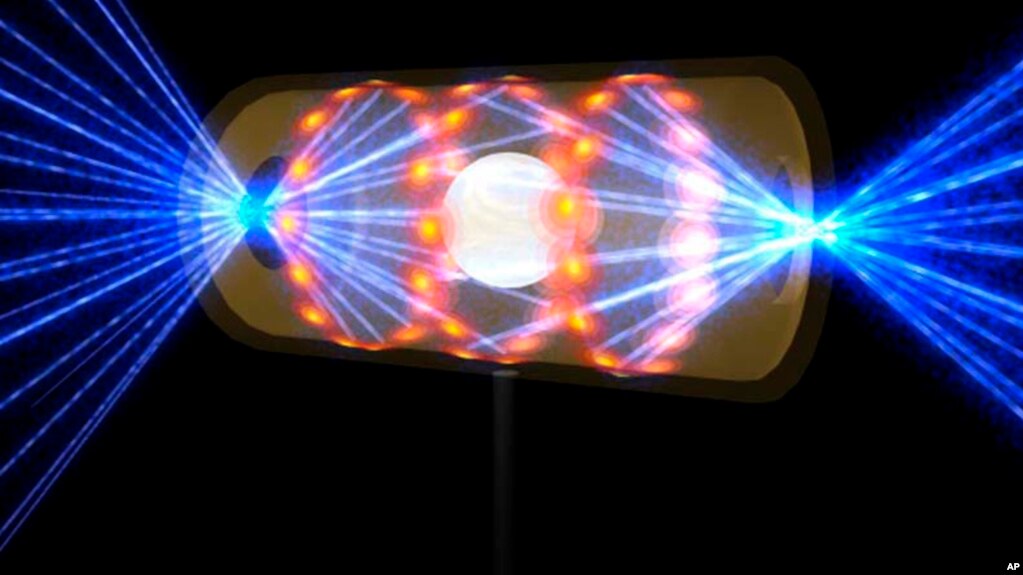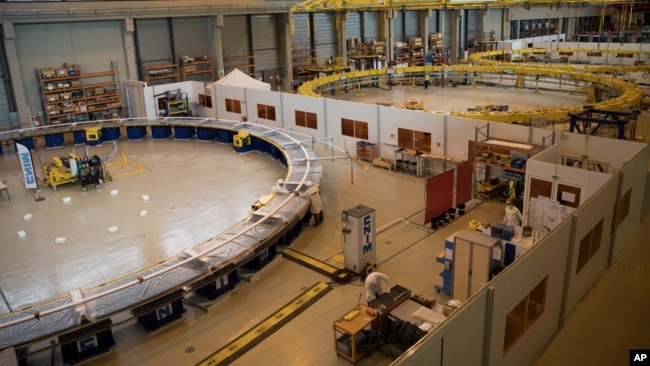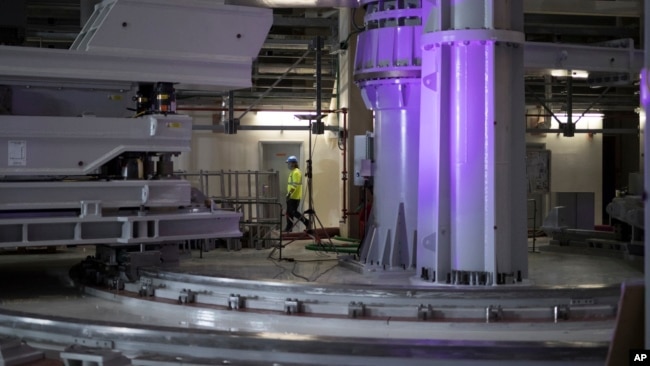
This illustration provided by the National Ignition Facility at the Lawrence Livermore National Laboratory depicts a target pellet inside a hohlraum capsule with laser beams entering through openings on either end.
American scientists have announced another step toward producing energy from nuclear fusion.
U.S. government researchers said they were able to cause a fusion reaction that sustained itself and produced energy for a very short period. The scientists said this was an important step because it is very difficult to get fusion to become self-sustaining. Fusion requires extremely high temperatures and pressures, and the process can easily stop.
Fusion happens when the nuclei of two atoms are subjected to extreme heat. This leads to the formation of a new, larger atom and the release of energy. Fusion is the process that fuels stars, including the sun. Some experts have suggested that someday, fusion energy could be used to provide limitless, pollution-free power.
One barrier to that goal is the fact that the fusion process itself needs a lot of energy. Scientists have not yet performed a fusion reaction that releases more energy than it requires.
Government scientists with the National Ignition Facility at the Lawrence Livermore National Laboratory in California carried out the experiments. The lab is part of the U.S. Department of Energy.
The experiments took place in November 2020 and February 2021. Research results recently appeared in a study in the publication Nature Physics.
The state reached in the experiments is called burning plasma. Plasma is one of the four main states of matter. It contains charged particles including ions and electrons. The Department of Energy explains that burning plasma “is one in which most of the plasma heating” comes from fusion reactions.
Alex Zylstra is an experimental physicist at Lawrence Livermore National Laboratory. He helped lead the research. Zylstra told Reuters that the process is similar to trying to start a fire.

“If you want to make a campfire, you want to get the fire hot enough that the wood can keep itself burning,” he said. “This is a good analogy for a burning plasma, where the fusion is now starting to become self-sustaining.”
The experiments involved aiming 192 lasers at a small capsule held inside a gold metal container. The researchers reported the process heats the capsule to about 100 million degrees Celsius. This creates about 50 percent more pressure inside the capsule than what is inside the center of the sun.
The experiments created burning plasmas that lasted just one trillionth of a second. But Zylstra said that was enough to be considered a success. He said fusion had produced about 10 times as much energy as went into heating the fuel. But it produced less than 10 percent of the total amount of laser energy because the process remains inefficient, Zylstra added.

The amount of energy produced was far more than in past experiments, the researchers said. But it was still small, about the same amount that is contained in nine-volt batteries.
Earlier experiments in the U.S. and Britain succeeded in fusing atoms, but produced no self-heating, Steven Cowley told The Associated Press. He directs the Princeton Plasma Physics Laboratory in New Jersey but did not take part in the study.
Zylstra said making fusion remains a huge and “complex technological challenge.” It will require serious investments and many years of study before it can be considered a realistic form of energy production, he added.
I’m Bryan Lynn.
The Associated Press, Reuters and Agence France-Presse reported on this story. Bryan Lynn adapted the reports for VOA Learning English.
Quiz – US Researchers Report Successful Fusion Reaction
Start the Quiz to find out
_____________________________________________
Words in This Story
reaction – n. a change that happens when two substances are put together
sustain – v. to cause or permit something to continue for a period of time
nuclei (pl.) (nucleus) –n. (physics) the central part of an atom which contains protons and neutrons
analogy – n. a comparison that shows how two things are similar
capsule – n. a small container
inefficient – adj. not achieving maximum productivity
battery – n. a device that provides and stores electricity for things
challenge – n. a difficult task or problem; something that is hard to do
We want to hear from you. Write to us in the Comments section, and visit WWW.VOA-STORY.COM